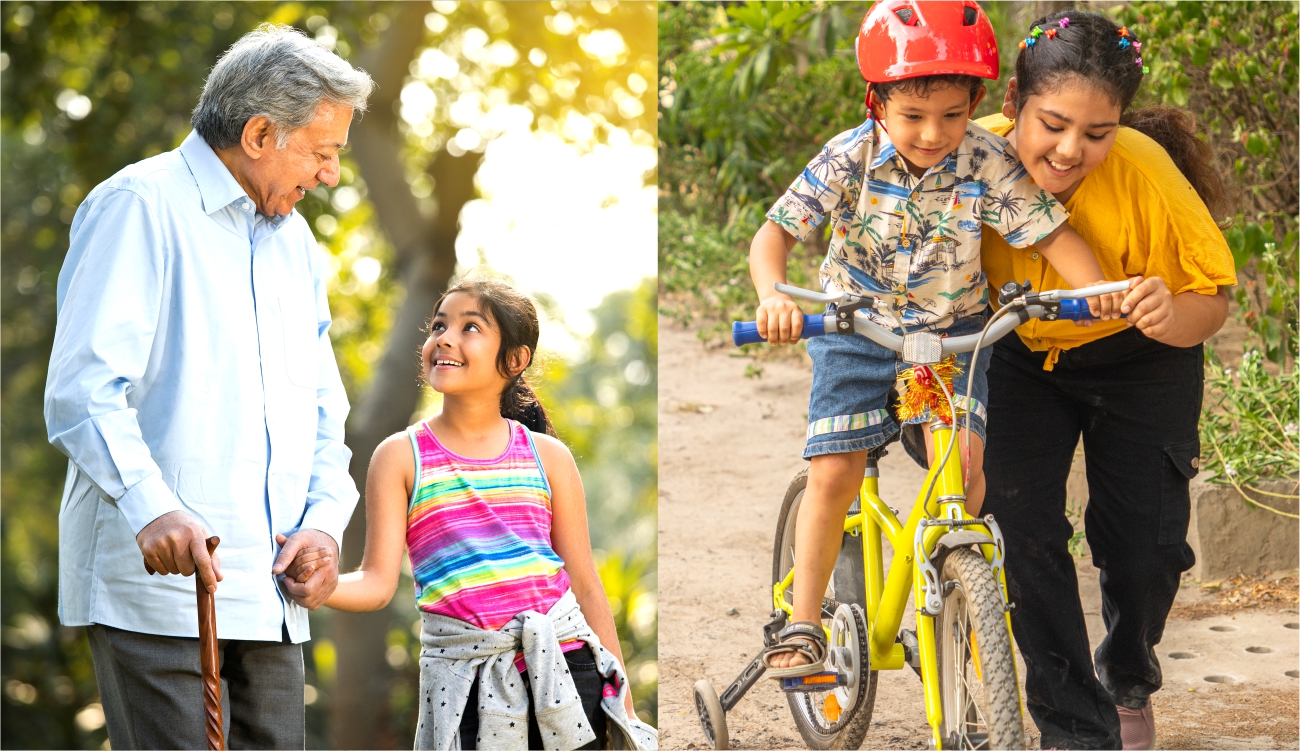![]()
In the many dreams we nurture for our children, such as academic success, a secure future, and a meaningful career, one hope quietly anchors them all: that they grow into good people
We want our children to be kind. To care deeply. To listen before judging. To honour another person’s pain even when it’s different from their own. These may not feature in a syllabus, but they are the life skills that determine how meaningfully our children will connect with the world.
And yet, in today’s climate, where misinformation is rampant and social media often rewards outrage over understanding, empathy can feel harder to teach, and even harder to model. But empathy, now more than ever, is essential. Fortunately, it can be nurtured through consistency, awareness, and the shared efforts of both parents and educators.
Empathy: More Than a Feeling
The word empathy has its roots in the Greek word empatheia, meaning “in feeling.” It’s not just about being kind, it’s about understanding. Psychologists often speak of two key forms:
● Emotional empathy: the ability to feel what another person feels
● Cognitive empathy: the capacity to grasp what someone else might be thinking or feeling from their point of view.
When children develop both, they don’t just react with compassion; they learn to respond with thoughtfulness and maturity. In a world flooded with emotionally charged content, this balance is more than noble — it’s necessary.
The Misinformation Maze
Children today are absorbing information at an unprecedented pace, through news clips, social media feeds, gaming platforms, and casual conversations. A large portion of this content provokes strong emotions but offers little nuance. In this landscape, what spreads fastest is rarely what’s most accurate — it’s what’s most inflammatory.
It’s no surprise, then, that researchers have long been sounding the alarm. A widely cited study found that empathy levels among teenagers had declined by 40 per cent over three decades, with nearly 75 per cent of college-age students reporting they were less likely to imagine another person’s perspective or show concern for those less fortunate. Similarly, Harvard’s Making Caring Common report, based on a survey of over 10,000 teens, revealed that 80 per cent prioritised high achievement or personal happiness, while only 20 per cent placed caring for others at the top. Most teens also felt that their parents were more focused on success than kindness. While these studies date back some years, their relevance has only deepened in the current digital age, where screen time has increased and virtual interactions often take precedence over real-world connections.
These aren’t just statistics — they’re signposts. They reflect a culture in which empathy is quietly sidelined, not out of neglect, but under the mounting pressures of modern life, which is precisely why the influence of both home and school has never been more critical.
Small Acts, Lasting Lessons: What Adults Can Do
Empathy doesn’t flourish through instruction alone; it takes root through repeated, lived experience. Here are some of the ways parents and educators can help children develop this essential skill:
Model empathy in everyday life
Children mirror what they see. When adults speak respectfully, listen without interrupting, or engage with people who think differently, children learn that these behaviours matter. Choosing explanation over dismissal, or patience over frustration, quietly affirms the value of empathy — without ever needing a lecture.
Talk about what they’re seeing online
Rather than shielding children from every troubling post or opinion, engage with it together. Ask: “What do you think this means?” or “Why might someone feel that way?” These conversations teach children to pause, reflect, and process information with care, not just react to it.
Use stories to build perspective
Narratives — whether found in books, films, or daily conversations — can be powerful tools for developing empathy. When children encounter stories about experiences vastly different from their own, like a refugee’s journey or a child navigating life with a disability, they begin to broaden their emotional understanding. Over time, these encounters nurture deeper compassion and the ability to relate to others with greater sensitivity.
Create space for discomfort
It’s tempting to rush in and resolve every conflict, but sometimes, the most profound learning comes from sitting with ambiguity. When children grapple with questions that don’t have easy answers, they develop emotional resilience and the capacity to hold multiple perspectives — a hallmark of mature empathy.
Praise thinking, not just answers
Instead of asking “What’s the right answer?”, try “What made you think that?” This can be a small shift, but a powerful one. It tells children that their thought process, especially when it considers others’ feelings and viewpoints, is as valuable as getting it ‘right.’
Empathy Is a Shared Responsibility
Empathy isn’t a ‘nice-to-have’, it’s a vital life skill. It allows children to collaborate meaningfully, navigate disagreement with dignity, and grow into adults who value understanding as much as achievement.
In this endeavour, parents and educators stand side by side. Every conversation, every shared story, every moment of active listening becomes a brick in the foundation of who a child becomes.
Because in an age where truth is often contested and digital noise can drown out human connection, empathy may be the most powerful — and lasting — education we can give
